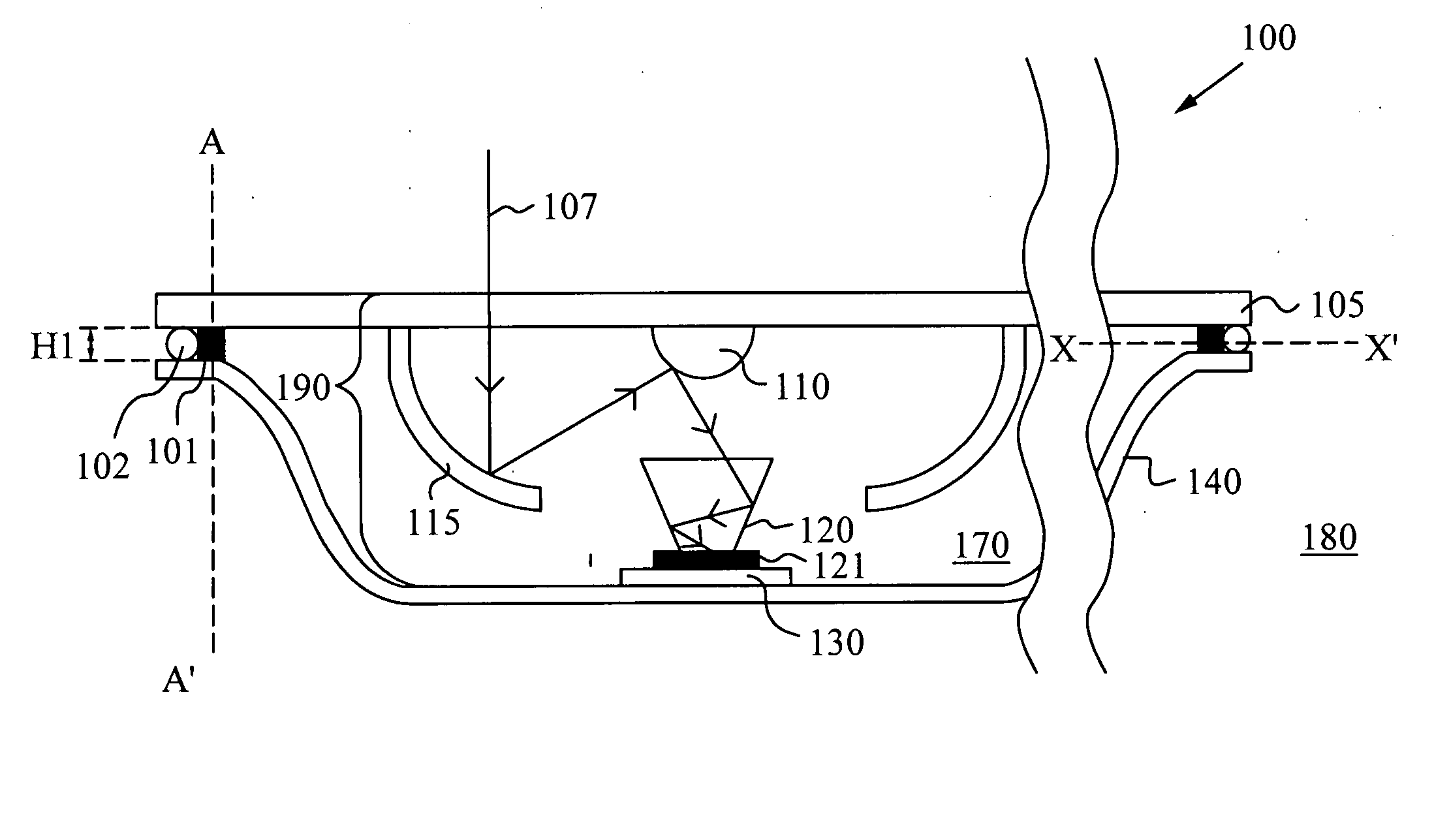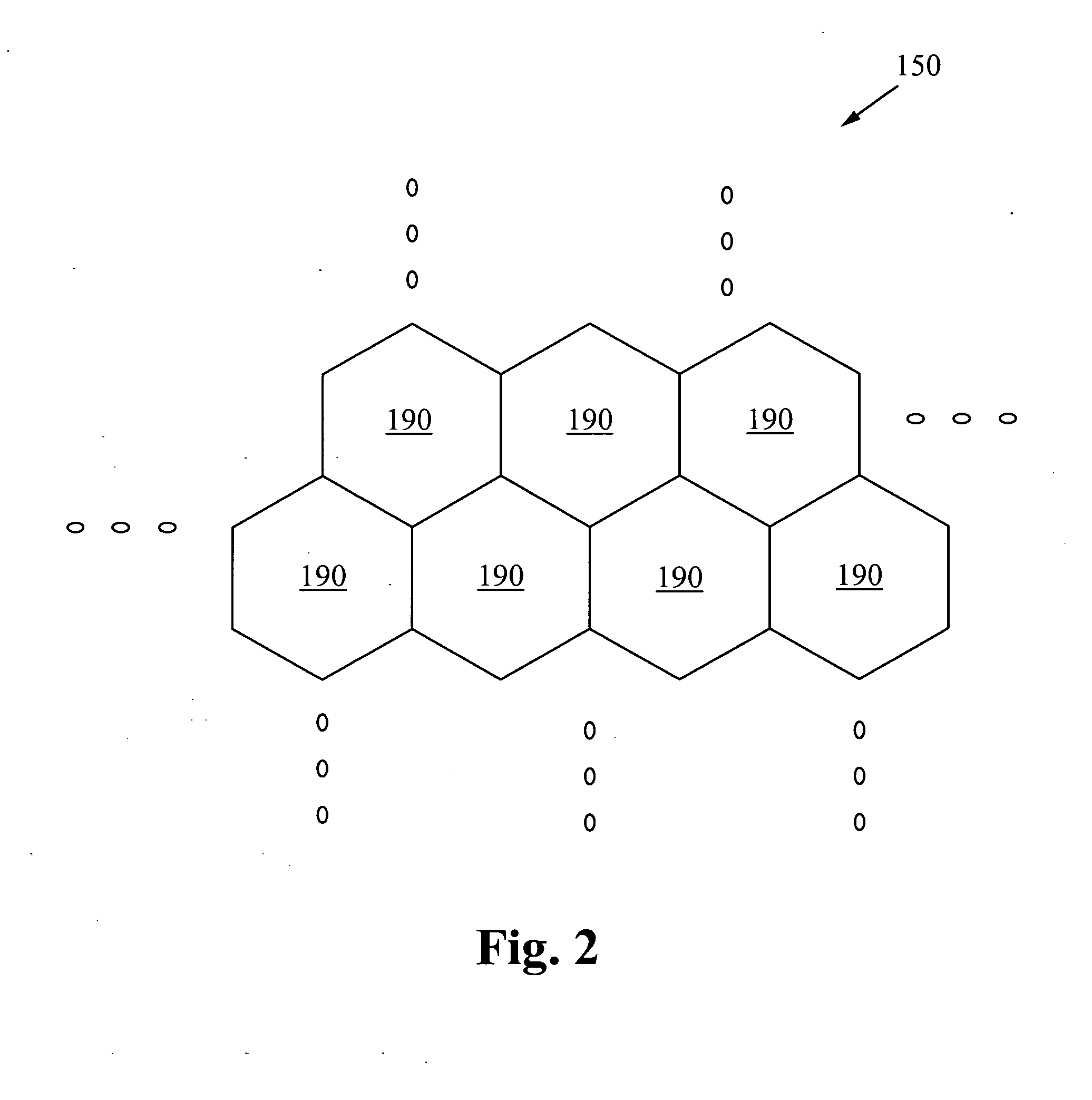Environmental condition control for an energy-conversion unit
a technology of environment condition control and energy conversion unit, which is applied in the direction of light radiation electric generator, semiconductor device, electrical apparatus, etc., can solve the problems of reducing affecting the efficiency of light-to-electrical conversion unit, so as to reduce the chance of failure and less stress
- Summary
- Abstract
- Description
- Claims
- Application Information
AI Technical Summary
Benefits of technology
Problems solved by technology
Method used
Image
Examples
Embodiment Construction
[0037]Energy-conversion units, such as concentrator photovoltaic devices (both fresnel lens and mirror optic based structures), are generally enclosed within chambers that provide structure and protection from an outside environment. The outside environment contains moisture, dust and pollutants. Pressure fluctuations within these units can be caused by temperature changes, barometric pressure changes, and the like. Embodiments of the present invention maintain an inside volume of a chamber separate from outside moisture, from outside contaminants, from pressure fluctuations, or any combination of these. The pressure fluctuation of the outside environment is very minimal compared to the pressure fluctuation within a totally sealed chamber due to temperature changes within the chamber. Thus, embodiments of the invention are designed to keep the chamber pressure equal to (or within a small band of) the pressure of the outside environment.
[0038]FIG. 1 is a side cross-sectional view of ...
PUM
 Login to View More
Login to View More Abstract
Description
Claims
Application Information
 Login to View More
Login to View More - R&D
- Intellectual Property
- Life Sciences
- Materials
- Tech Scout
- Unparalleled Data Quality
- Higher Quality Content
- 60% Fewer Hallucinations
Browse by: Latest US Patents, China's latest patents, Technical Efficacy Thesaurus, Application Domain, Technology Topic, Popular Technical Reports.
© 2025 PatSnap. All rights reserved.Legal|Privacy policy|Modern Slavery Act Transparency Statement|Sitemap|About US| Contact US: help@patsnap.com



